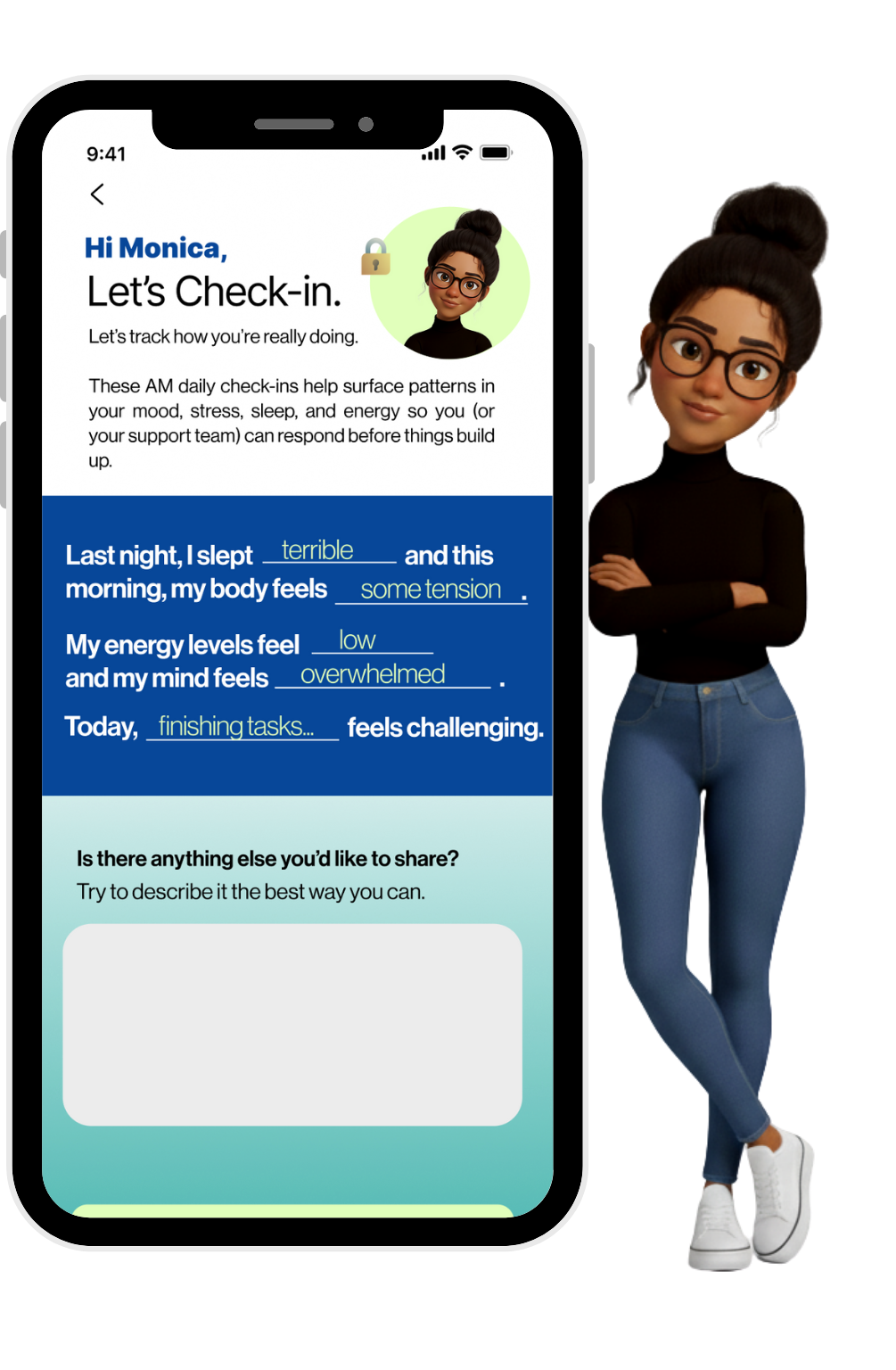

You can't treat what you can't see.
Most crises don’t start in session. They build quietly between visits—unseen, undocumented, and expensive.
KayAI offers AI-driven support that monitors behavioral changes between therapy sessions, providing concise insights to improve care and reduce unseen crises.

The problem (in numbers)
Mental-health care intervenes too late and too expensively. Between visits, people quietly drift toward crisis—subtle changes in mood, sleep, overwhelm, and connection go unseen; patients lack timely, humane support; providers get snapshots instead of trendlines; and the work they do between sessions is rarely documented. The result is avoidable ED visits, readmissions, no-shows, leakage, clinician overload, and uncontrolled cost.
Health systems need early, reliable visibility into emotional drift and a way to turn between-visit moments into timely action and clean, reimbursable documentation—before small struggles become high-acuity spend.

The need is massive, treatment is late.
1 in 5 U.S. adults experiences a mental health condition each year, yet fewer than half receive treatment; the average delay from first symptoms to care is about 11 years (CDC; NAMI).

Costs are concentrated and avoidable.
A minority of members with behavioral conditions drive >30% of total health spending, and integrated medical-behavioral care shows substantial savings potential (American Psychiatric Association; Milliman).
ED is absorbing preventable demand.

Mental/substance-related ED visits total roughly 10.7M annually, with $5.6B in service costs (~$520/visit)—often reflecting late detection and poor continuity (AHRQ/HCUP).
Clinicians are buried in clicks.

Primary care physicians spend a median ~36 minutes of EHR time per visit (including inbox/pajama time), crowding out prevention work (JAMA Network Open).

Workforce capacity is strained.
Widespread mental-health HPSA designations signal persistent access gaps; we cannot staff our way out with clinicians alone (HRSA).
Kay AI —Prevention that pays for itself.
Kay AI is a prevention-first layer that keeps patients engaged between visits and surfaces the right moments to act—without adding clinics or headcount. Patients complete 60–90 second A.M./P.M. check-ins and can message Kay, our AI companion, for just-in-time coping strategies. When risk trends up, providers see concise, high-signal alerts; finance sees attributable, documentation-ready activity.
Meet Kay.
Kay is an agentic, HIPAA-compliant AI that notices early behavioral drift from ~60-second AM/PM check-ins (and optional notes), then takes bounded, useful actions you control. Patients get one human-sized step at a time. You get concise pre-session snapshots and automatic monthly rollups that actually inform care and documentation.
- Earlier course-corrections → fewer “how did we get here?” moments
- Sharper sessions → less reconstruction, more intervention
- Claim-ready artifacts → time-stamped, plain-English summaries that fit your workflow
The ROI
- Cost avoidance you can see: Even modest drops in psych ED utilization/readmissions make the program net-positive at population scale.
- Reimbursable activity, clearly attributed: Brief assessments and between-visit communications mapped to eligible codes; you control coding/attestation, we supply evidence.
- Predictable spend: Transparent per-patient pricing and executive-level reporting—utilization, risk distribution, documentation volume, and estimated impact on high-cost events.
Features (that actually work)
AM/PM Check-ins (≈60s)
Quick prompts that power Kay’s reasoning. Notes are optional.
Kay Chat
Ask anytime; get one doable next step with a plain-English “why.”
Risk Awareness
Simple signals when things are shifting so you can act sooner.
Trends & Insights
3- and 7-day views that highlight what’s helping—without noisy dashboards.
Grounded in an evidence-based, multi-pronged approach
Kay’s library is built from CBT, DBT, Mindfulness, Motivational Interviewing, and Emotion Regulation.
My Toolbox
Save what actually helps you—then Kay surfaces the right tool at the right time.
Peer Support
Connect with people who “get it.” Not therapy—community and conversation.
Provider Sharing
Link a clinician to share concise snapshots and monthly summaries. Unlink any time.
Privacy Controls
HIPAA-compliant by design. No ads. No data sales. Export or delete any time.
Implementation (days, not months)
Upload one CSV. Kay does the rest. Download the template, add patient fields, and upload via the secure provider portal.
Monthly reports and pre-session snapshots start automatically for each patient.
Optional when you’re ready: BAA for enterprise, SSO, webhook/PDF delivery.
Why leaders choose Kay

Practice-aware
Preferences + audit trail keep it consistent. Billable codes make it revenue sustainable.



